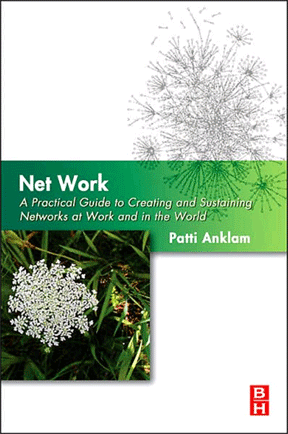Via Beth Kanter, I am reading today an essay on network leadership by Bill Traynor, executive director of Lawrence Community Works. I had the pleasure of meeting Bill last fall at a regional nonprofit event, and was literally blown away by his success building a network of stakeholders and small groups in Lawrence, MA focusing on community development and civic engagement.
In his essay, Vertigo and the Intentional Habitant: Leadership in a Connected World, bill provides an essential, must-read, guide for those who understand that networks are the only way that real work gets done and understands how to work in complexity.
I have used the word “intentional” with respect to Net Work to express the importance of being aware of the network and using this awareness to work with and for the network. Traynor describes the “Intentional Habitant” as follows:
In connected environments, leaders know that networks are always teetering on the edge of balance, requiring many small adjustments to achieve a measure of dynamic stasis. I have found that a network leader has to be in constant motion, paying attention to the habits and the small stimuli needed to incessantly reconstitute balance and motion. One must learn to feel the current of change, look for and recognize resonance, and deploy oneself not as prod, but as a pivot for the many moments of change that are called for every day.
He also describes how work gets done in the network, telling the story of how member of his network would go about creating a club for 10-year-old girls:
Staff is asked to challenge that member organization to pull together others who might agree and provide the space and time for the club to happen. If a group assembles, staff is asked to challenge the group to put on an event and to bring some girls together to do something fun and helpful. If the event takes place, staff might work with the group on a short series. In other words, we resource the specific demand rather than jump to program development before an idea has proven its value to other members.
The result is an iterative process that goes through several cycles in a span of months. Months that, in traditional management, would have been spent planning, resourcing, designing, raising money — and learning nothing.
Critical to understanding how to manage in networks is the word above, space. Providing space and time is not just providing physical space, but also “accessibility, flexibility, and options.” Maintaining this environment is rooted in three disciplines:
- Keep moving the outer edge of the network, continuing to expand the network so as to continue to reduce the cost per member.
- Continuously listen to the network and follow the demand for services by continually experimenting in response to the needs of the network
- Shrink or contract routine and recurring activities to their simplest and most efficient forms
The critical mindshift for the leader of a network is to learn that one cannot possibly do anything alone. “In fact,” he says, “in this process there is no ‘alone.’” This is another point that I emphasize in my NetWorkShops on personal networks. Your network is there because you need it, you will always need it, and you must discipline yourself to remember when you in the middle of great problems, opportunities, stresses, and challenges, that you must, must, must, remember your network of support.


